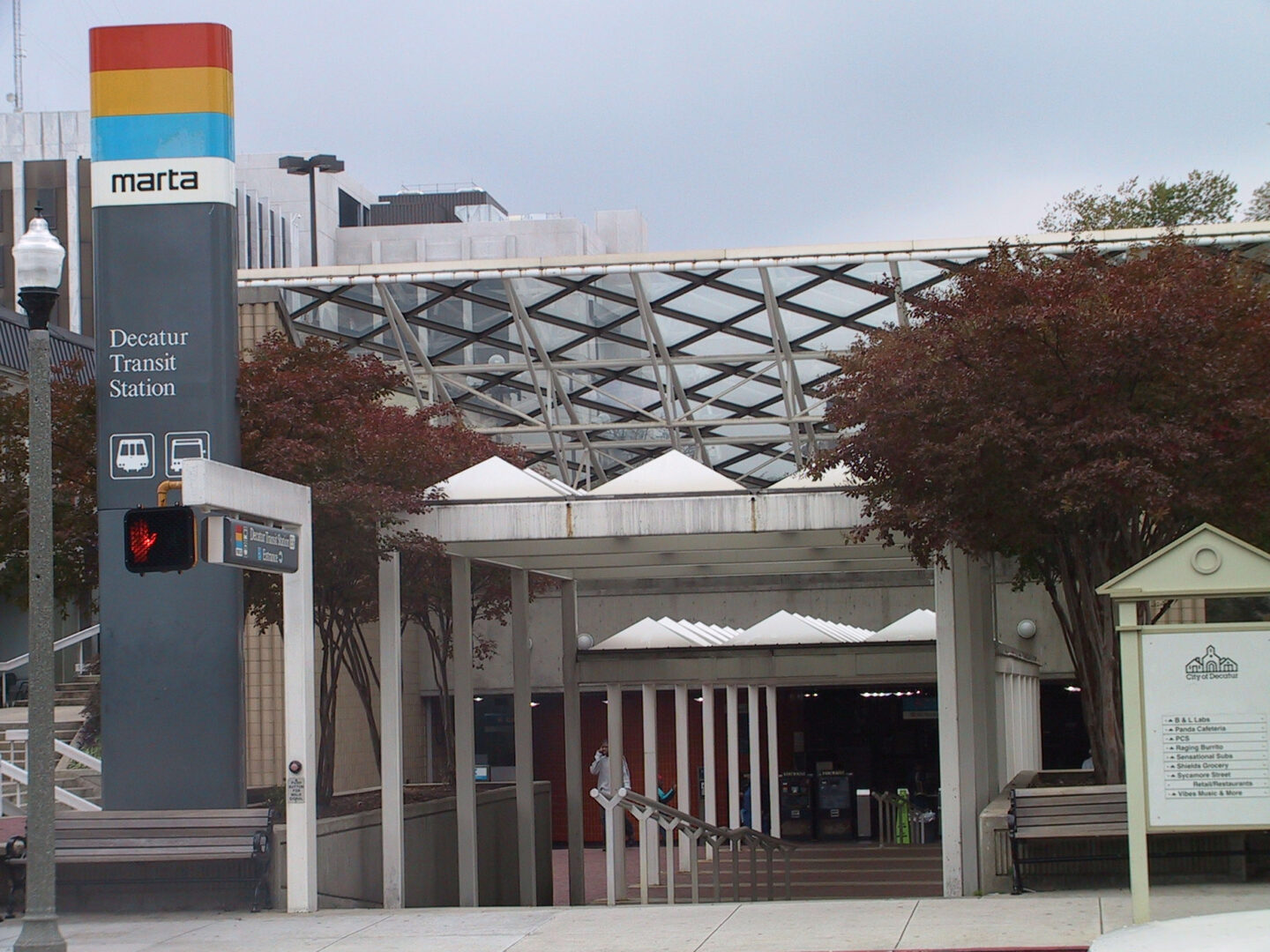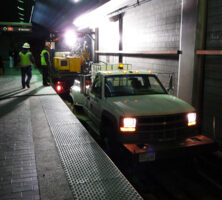The Metropolitan Atlanta Rapid Transit Authority, known as MARTA, provides bus and rapid rail service to the most urbanized portions of the Atlanta metropolitan area. The eighth-largest transit system in the United States, MARTA serves nearly 400,000 passengers a day. The transit agency was established in 1971 with the passage of an authorizing referendum by voters in Fulton and DeKalb counties and the city of Atlanta.
A public authority operated under Georgia law, MARTA is governed by a fifteen-member board of directors with representation from Fulton, DeKalb, Clayton, and Gwinnett counties and the city of Atlanta. MARTA has more than 4,500 employees. Fares and a sales tax provide the bulk of the system’s operating revenues. MARTA is the only major mass transit system in the country that does not receive state support.
History and Administration
In 1960 Atlanta Chamber of Commerce president Ivan Allen Jr. proposed a six-point program for the city’s growth and development. The proposal’s centerpiece was a rail transit system that would solve Atlanta’s impending transportation crisis and distinguish the city from its regional peers. When he was elected mayor the following year, Allen made rail transit an administrative priority and began the difficult task of obtaining legislative approval, assembling a board of directors, and soliciting architectural and engineering plans.
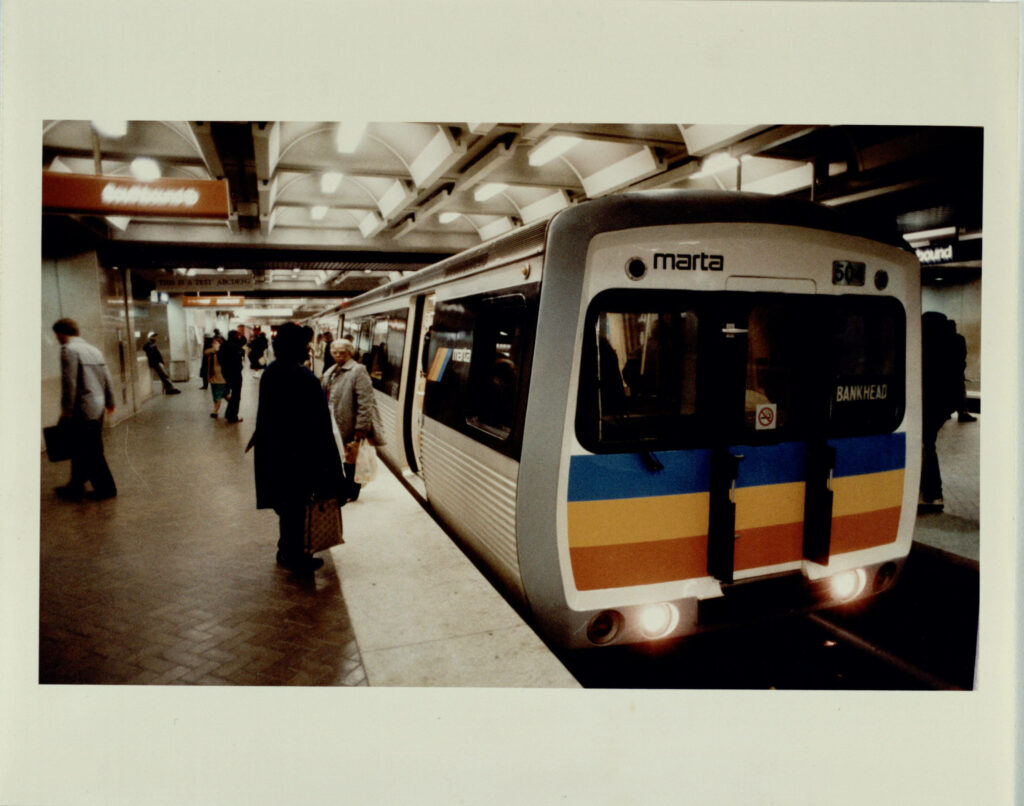
Courtesy of Special Collections & Archives, Georgia State University Library.
When the referendum to create MARTA finally appeared on ballots in the city of Atlanta and in Fulton and DeKalb counties in the fall of 1968, MARTA’s proponents touted the system as a transportation cure-all that would ease the metropolitan area’s congestion and establish Atlanta as a “national city.” Despite enjoying wide support in the city’s business community, the measure failed in all three jurisdictions. MARTA encountered stiffest opposition from Atlanta’s Black community; Black voters objected to the proposed system’s marked service inequality (routes would provide greater service to white neighborhoods than to Black ones), limited African American representation on the MARTA board, and the board’s refusal to honor requests for minority employment guarantees.
The board took steps to become more representative of citywide interests, welcoming its critics to the negotiating table, restructuring routes to better serve Black communities, implementing a minority employment plan, shoring up federal financial support, and proposing the system’s extension into the suburban Atlanta counties of Clayton and Gwinnett. In 1971 MARTA was put to the voters again, appearing on ballots in Clayton, DeKalb, Fulton, and Gwinnett counties as well as the city of Atlanta. As a result of the board’s concessions, voters in Atlanta, Fulton, and DeKalb approved the measure.
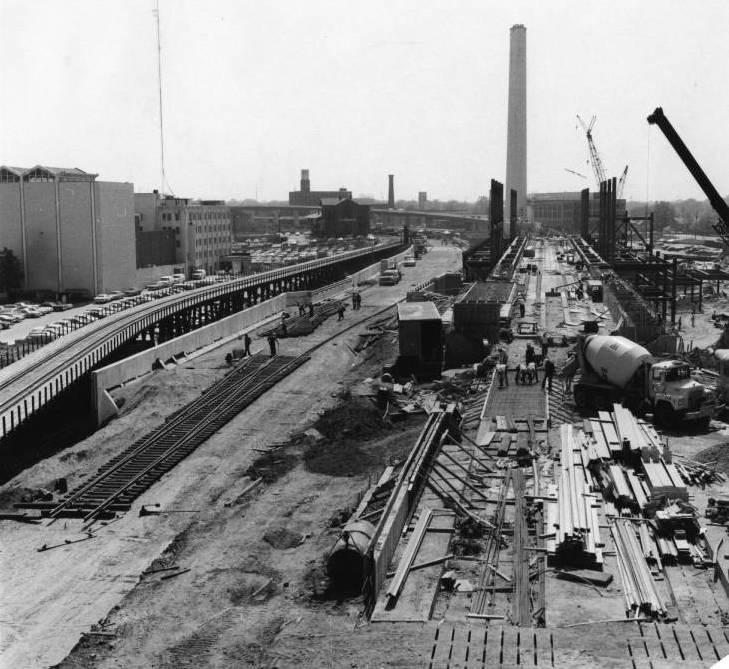
Courtesy of Atlanta Journal-Constitution.
This time MARTA encountered opposition from conservative suburban residents in Clayton and Gwinnett counties, where metropolitan expansion and white flight from Atlanta had recently contributed to dramatic population growth. The system’s suburban critics, many of whom left Atlanta following the integration of the city’s public spaces, predicted that MARTA would expedite the racial integration of predominantly white suburbs, would lower home values, and would make suburban communities vulnerable to federal busing programs and the dispersal of public housing. As a consequence, voters in the two counties defeated the measure by a four-to-one margin. In so doing, the system’s suburban opponents limited MARTA’s effectiveness as a solution to the area’s transportation woes and helped to redefine the lines separating the city from its suburbs. Although they retained representation on the authority’s board, suburban jurisdictions remained opposed to MARTA’s expansion until 2014, when voters in Clayton County approved a referendum to join the system. Gwinnett and Cobb counties have not yet followed suit, but polls indicate that opposition may be waning in both counties.
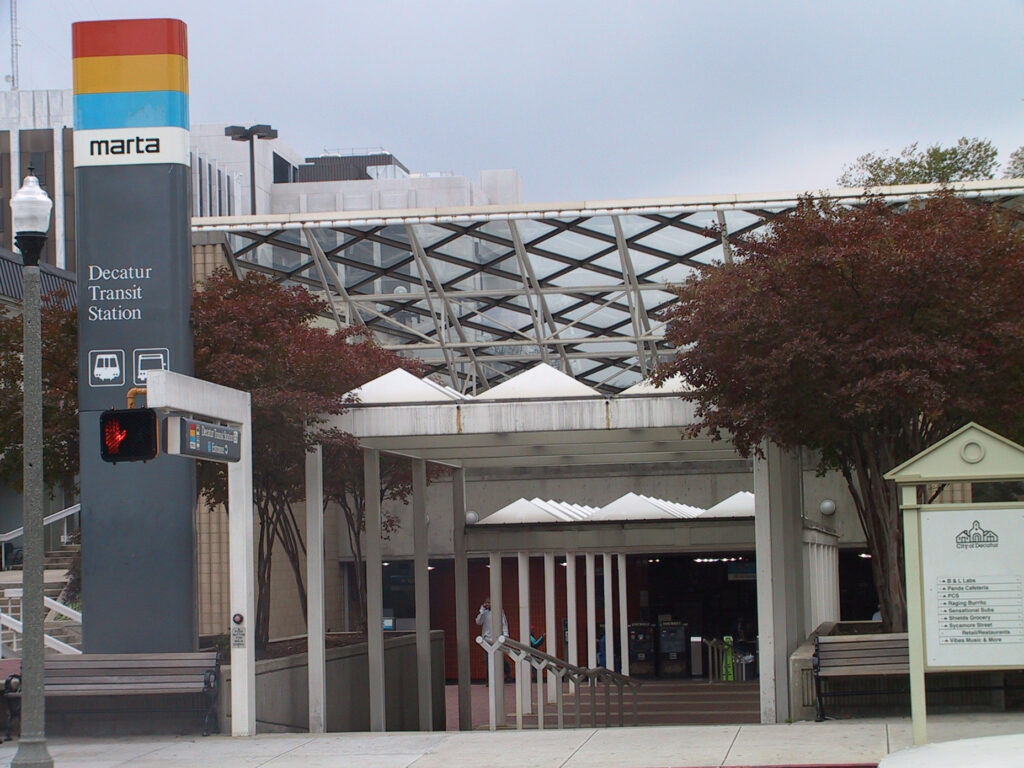
Photograph by Melinda G. Smith, New Georgia Encyclopedia
After its establishment, MARTA purchased assets of the old Atlanta Transit System, a privately owned company that had operated bus routes in the city. With generous federal assistance and a 1 percent special sales tax collected in Fulton and DeKalb counties and the city of Atlanta, rail construction began in 1975. Service on the east line began in June 1979, and the system has grown steadily since then. Stations at North Springs and Sandy Springs opened in December 2000 to serve Atlanta’s growing north side.
Rapid Rail System
MARTA’s rapid rail system includes nearly forty-eight miles of track and thirty-eight stations. MARTA operates 350 modern electrically powered rail cars capable of operating at speeds of up to seventy miles per hour.
The rapid rail system operates two main lines. The north-south line runs from the North Springs Station and the Doraville Station, both outside the Interstate 285 perimeter highway in the north metropolitan area, to Hartsfield-Jackson Atlanta International Airport in the south. The Doraville Station is the northern terminus of the northeast line, which branches from the north line and roughly follows the path of Interstate 85 through Atlanta. The north line, with the North Springs Station as its terminus, parallels the Georgia 400 toll way. The east-west line connects the Hamilton E. Holmes Station near the western interchange of Interstate 285 and Interstate 20 with the Indian Creek Station, the eastern terminus of the line.
Most MARTA rail stations connect to the system’s bus routes, which feed passengers into the higher-capacity trains. Passengers boarding either part of the system can transfer at no charge to the other part. MARTA has a flat-rate fare system.
Several of MARTA’s train stations are noteworthy for architectural and civil engineering reasons. The Peachtree Center Station, part of the north-south line, is ten stories underground and uses the longest and steepest escalators in the Southeast to transport passengers from the station to exit points on Peachtree Street, Atlanta’s main thoroughfare. Exposed rock in the station’s ceiling bears testimony to how the station was blasted from solid rock beneath the city’s skyscrapers.
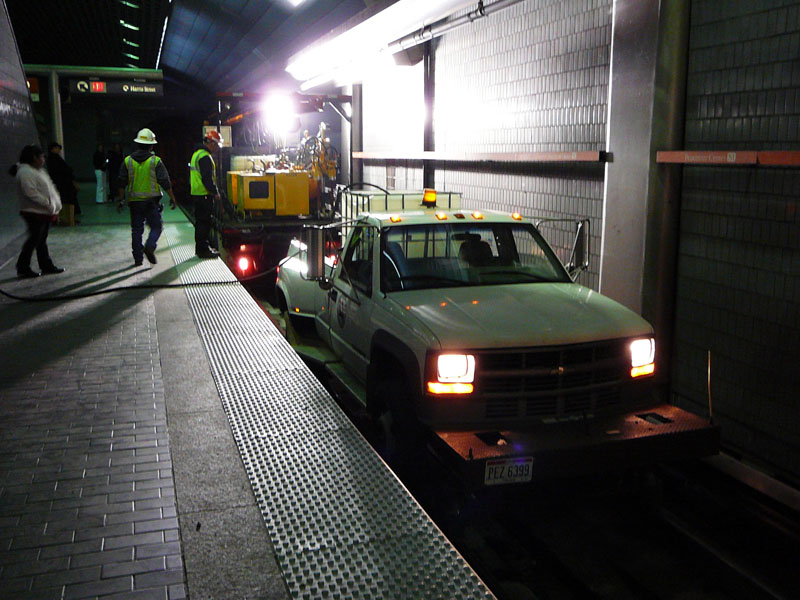
Photograph by Brett Weinstein
MARTA’s Five Points Station, the interchange of the north-south and east-west lines, is the system’s busiest station, with more than 57,000 riders a day. It features two levels of track, allowing riders to transfer between lines.
With increasing congestion and rising parking costs at Hartsfield-Jackson Airport, the station there has become increasingly popular with air travelers. The MARTA Airport Station, connected to the west end of the terminal, adjacent to North and South terminal baggage claim areas, allows air travelers convenient access to ticketing areas and entrances to the concourses. Delta Air Lines, Atlanta’s largest carrier, operates a ticket counter inside the Airport Station. The direct airport connection is particularly useful to visitors staying at downtown hotels that are immediately adjacent to the north-south line.
To serve local residents, MARTA provides about 28,000 parking spaces at its rail stations.
Bus System
MARTA operates buses on more than 100 routes in the system’s three-county service area. In recent years the system has purchased new vehicles that operate on compressed natural gas, a clean-burning fuel chosen to support the city’s effort to improve air quality. Trains and rail stations are accessible to the disabled, and a majority of the buses include wheelchair lifts.
Beginning in the late twentieth century, the suburban counties of Clayton, Cobb, and Gwinnett have launched their own mass transit systems using buses that tie into MARTA. Cobb Community Transit began operating in 1989 on routes within the county, located northwest of Atlanta. Clayton County’s C-TRAN system opened in October 2001 with support from the Georgia Regional Transportation Authority, but folded in 2010 due to financial distress. The Gwinnett County Transit system began operation in November 2001.





